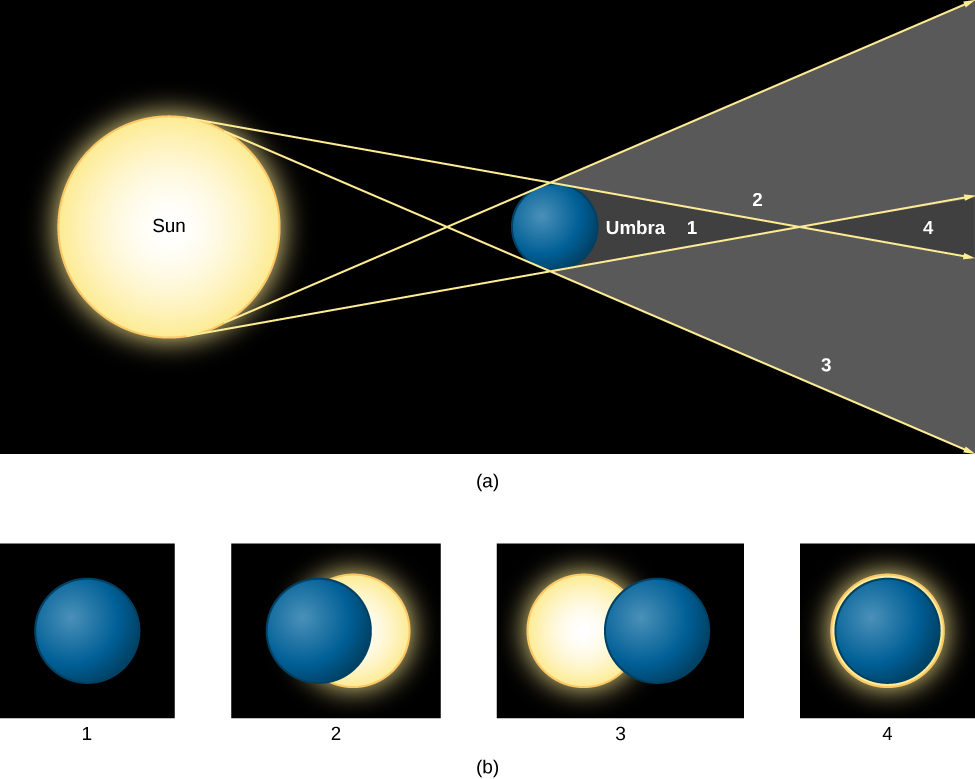| << Chapter < Page | Chapter >> Page > |
By the end of this section, you will be able to:
One of the coincidences of living on Earth at the present time is that the two most prominent astronomical objects, the Sun and the Moon , have nearly the same apparent size in the sky. Although the Sun is about 400 times larger in diameter than the Moon, it is also about 400 times farther away, so both the Sun and the Moon have the same angular size—about 1/2°. As a result, the Moon, as seen from Earth, can appear to cover the Sun, producing one of the most impressive events in nature.
Any solid object in the solar system casts a shadow by blocking the light of the Sun from a region behind it. This shadow in space becomes apparent whenever another object moves into it. In general, an eclipse occurs whenever any part of either Earth or the Moon enters the shadow of the other. When the Moon’s shadow strikes Earth, people within that shadow see the Sun at least partially covered by the Moon; that is, they witness a solar eclipse . When the Moon passes into the shadow of Earth, people on the night side of Earth see the Moon darken in what is called a lunar eclipse . Let’s look at how these happen in more detail.
The shadows of Earth and the Moon consist of two parts: a cone where the shadow is darkest, called the umbra , and a lighter, more diffuse region of darkness called the penumbra . As you can imagine, the most spectacular eclipses occur when an object enters the umbra. [link] illustrates the appearance of the Moon’s shadow and what the Sun and Moon would look like from different points within the shadow.

If the path of the Moon in the sky were identical to the path of the Sun (the ecliptic), we might expect to see an eclipse of the Sun and the Moon each month—whenever the Moon got in front of the Sun or into the shadow of Earth. However, as we mentioned, the Moon’s orbit is tilted relative to the plane of Earth’s orbit about the Sun by about 5° (imagine two hula hoops with a common center, but tilted a bit). As a result, during most months, the Moon is sufficiently above or below the ecliptic plane to avoid an eclipse. But when the two paths cross (twice a year), it is then “eclipse season” and eclipses are possible.
The apparent or angular sizes of both the Sun and Moon vary slightly from time to time as their distances from Earth vary. ( [link] shows the distance of the observer varying at points A–D, but the idea is the same.) Much of the time, the Moon looks slightly smaller than the Sun and cannot cover it completely, even if the two are perfectly aligned. In this type of “annular eclipse,” there is a ring of light around the dark sphere of the Moon.

Notification Switch
Would you like to follow the 'Astronomy' conversation and receive update notifications?